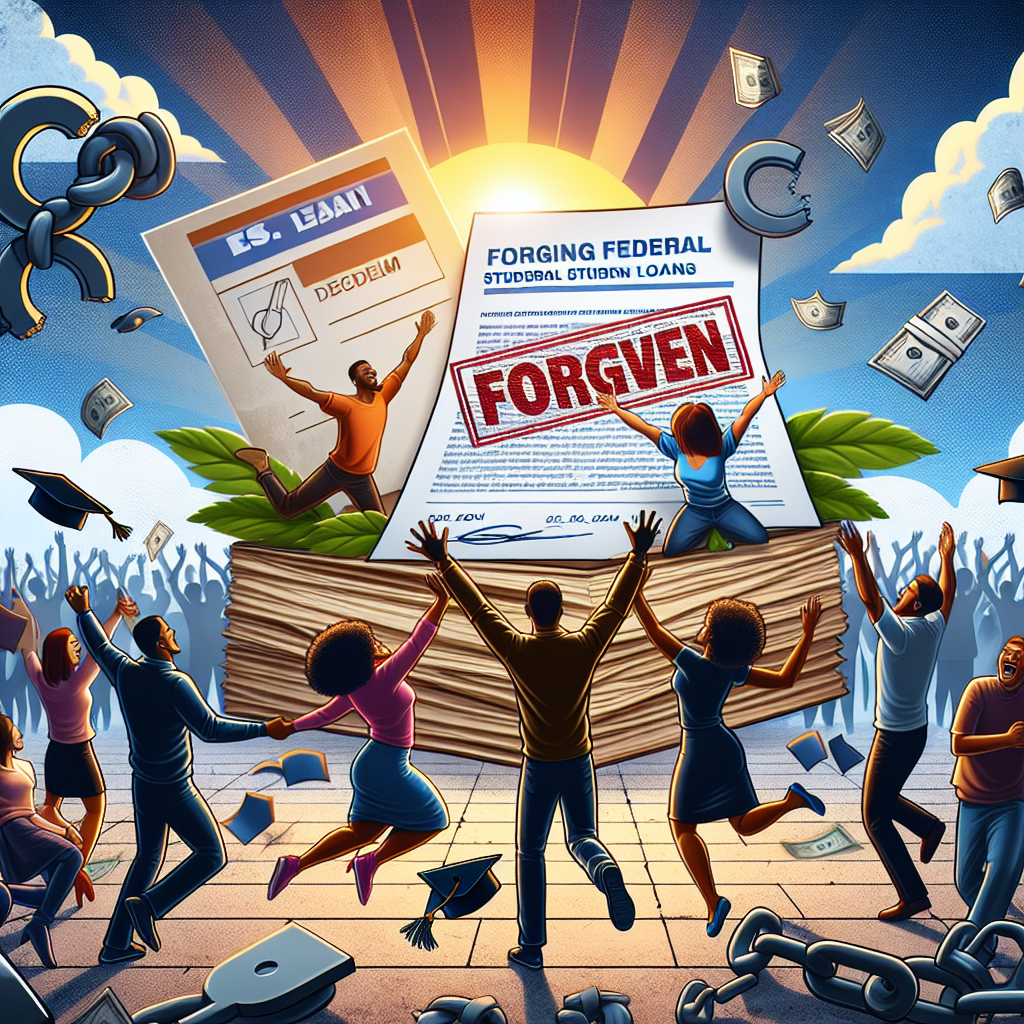
Forgiving federal student loans
Understanding the Landscape of Forgiving Federal Student Loans
The burden of student loan debt is a significant concern for many Americans. As tuition costs soar, federal student loans have become a necessary financial resource for countless students. However, as debt accumulates, so does the call for policies aimed at forgiving federal student loans. This post delves into the various strategies, programs, and implications surrounding the forgiveness of student loans, providing a comprehensive view of what it means for borrowers and the education system as a whole.
The Rise of Student Loan Debt
In recent years, student loan debt in the United States has reached staggering heights. According to the Federal Reserve, the total student loan debt surpasses $1.7 trillion. This figure is alarming and raises critical issues concerning financial sustainability for borrowers and long-term impacts on the economy.
Statistics on Student Loan Debt
- Over 45 million borrowers in the U.S.
- Average student loan debt per graduate is approximately $30,000.
- Delinquency and default rates have been rising, particularly among younger borrowers.
These statistics highlight a pressing challenge: the need for solutions to alleviate the financial pressure faced by millions of individuals who are struggling to repay their loans.
What Is Loan Forgiveness?
Forgiving federal student loans refers to policies designed to relieve borrowers of the obligation to repay part or all of their loans, often under specific circumstances or conditions. There are several established federal programs aimed at providing relief, which can significantly reduce the anxiety and financial burden for eligible borrowers.
Types of Loan Forgiveness Programs
Below are the main categories of federal student loan forgiveness options available to borrowers:
- Income-Driven Repayment (IDR) Forgiveness: After making qualifying payments under IDR plans for 20 to 25 years, borrowers may have their remaining loan balance forgiven.
- Public Service Loan Forgiveness (PSLF): Designed for individuals working in public service jobs, borrowers can have their remaining federal student loans forgiven after 120 qualifying payments.
- Teacher Loan Forgiveness: Teachers who work in low-income schools may qualify for loan forgiveness up to $17,500 after five years of service.
- Closed School Discharges: Borrowers whose schools closed while they were enrolled may be eligible for complete discharge of their loans.
How the Forgiveness Process Works
Navigating the process of achieving loan forgiveness can seem daunting, but understanding the steps involved can help demystify it for borrowers. Here’s a general overview of how to go about it:
Steps to Apply for Loan Forgiveness
- Research Eligibility: Determine which forgiveness programs you qualify for based on your profession and loan type.
- Stay Informed: Regularly check for updates on loan policies and changes to forgiveness programs.
- Keep Detailed Records: Maintain documentation of your employment, payments made, and any communication with loan servicers.
- Submit Required Forms: Complete and submit necessary forms to your loan servicer or the Department of Education.
- Follow Up: After submission, monitor the status of your application and ensure all requirements are met.
Adhering to these steps can increase the chances of securing loan forgiveness, but it requires diligence and proactive management of one’s financial obligations.
The Impact of Loan Forgiveness Programs
The ramifications of forgiving federal student loans extend beyond individual borrowers; they also have broad implications for the economy and society. Here are key areas affected by these programs:
Benefits to Borrowers
- Reduced financial burden allows for increased disposable income.
- Improved mental health and financial stability.
- Increased opportunities for home ownership and investment.
Economic Implications
When borrowers find relief from their student loan debt through forgiving federal student loans, the broader economy may also benefit as individuals can spend and invest in other areas:
- Stimulates consumer spending.
- Encourages entrepreneurship and small business growth.
- Potential for upward mobility in various sectors.
Challenges and Criticisms of Forgiveness Programs
Despite the benefits, loan forgiveness programs face criticism and challenges that warrant discussion. Critics often highlight the following concerns:
Equity and Access
Some argue that loan forgiveness disproportionately benefits higher-income earners who attended more expensive institutions and accrued larger debts. This raises questions about equity, as many low-income students may not accumulate debt to the same extent.
Public Funding Concerns
There are concerns regarding the cost to taxpayers associated with widespread loan forgiveness. As the government assumes the burden of canceled loans, public funding and fiscal policy become critical discussion points.
Future of Student Loan Forgiveness in America
The discussion around student loan forgiveness is ongoing, shaped by political, economic, and social considerations. With the current landscape, various proposals aim to alter student loan policy, including:
Proposals for Reform
- Immediate cancellation of a portion of federal student loans for all borrowers.
- Expansion of eligibility criteria for existing forgiveness programs.
- Introduction of new programs aimed at specific professional sectors, such as healthcare or education.
As policymakers deliberate these options, the future of student loan forgiveness remains uncertain yet pivotal in addressing the needs of millions of borrowers.
Conclusion
The phenomenon of forgiving federal student loans is multifaceted, involving various programs and implications for borrowers, the economy, and society. As student loan debt continues to rise, the discourse around loan forgiveness grows more urgent. By understanding the existing options, challenges, and potential reforms, both borrowers and policymakers can engage more effectively in the dialogue about the future of education financing in America.
Ultimately, as we explore avenues for alleviating the burdens of student debt, it becomes clear that forgiving federal student loans represents a significant component in creating a fairer and more sustainable education system.
By Guest, Published on September 26th, 2024